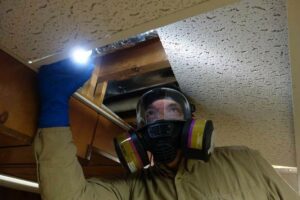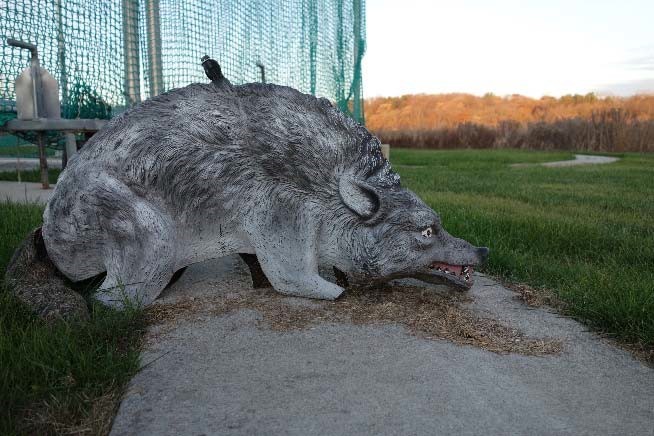
Photo credit: Jan Hygnstrom
Managing wildlife pests requires specialized knowledge and tools. A Wildlife Control Operator (WCO) is a professional trained to solve problems from wildlife damage and nuisance wildlife situations, usually for profit, and often licensed or permitted by the government. In some states, a WCO may be called an Animal Damage Control Agent (ADC), Animal Control Agent (ACA) or Wildlife Damage Control Agent (WDCA). Technically, a WCO is a specialist in vertebrate pest management with the ability to capture, transport and humanely dispatch an animal, and repair and prevent the damage from occurring again. In this module, the term WCO includes all technicians trained in Integrated Wildlife Damage Management.
Wildlife Management Assessment
When you receive a call from a client, or encounter a wildlife problem, there are several things you would like to know before determining a course of action. The following assessment will help you think through many wildlife conflicts and lead to successfully resolving the issue.
- The Problem– The first thing to determine is if the problem is real or perceived by the landowner. Seeing a coyote or raccoon walk through a backyard is not really a concern. However, this situation may be very unsettling for someone who is frightened or if there are children or pets in the home. Determine if the problem can be handled with education, or if some type of on-site response is warranted.
- Species Identification– Many people have very poor wildlife identification skills. You cannot resolve a problem unless you know exactly which species is involved. For example, many homeowners often cannot distinguish between moles and voles. Both species may damage lawns or planting beds and look similar, but the approach to use for solving a problem would be quite different. Ask questions until you feel comfortable with the species identification. Request that the person send you a quality photograph of the animal if possible.
- Short- vs. Long-Term Problems– One needs to understand wildlife behavioral ecology to know what solutions might be suitable. For example, problems with migratory geese grazing on crops may only last for a couple of weeks during spring or fall. In this case, flagging, predator models, or other short-term visual deterrents could be effective. However, with resident Canada geese, problems may occur during the entire year. Scare devices usually have limited effectiveness for local-nesting geese. It is important to know seasonal aspects of wildlife behavior to determine effective solutions. Exclusion or animal removal may be needed to resolve long-term conflicts.
 |
 |
| Scary-eye balloons move in the wind and frighten birds. Photo by Jan Hygnstrom. | A decoy of a wolf used to scare off geese. Photo Jan Hygnstrom |
- Unique Species Attributes– Again, knowing animal behavior is critical. For example, resident Canada geese molt (replace) their flight feathers during late June each summer and these birds are flightless for about 3 weeks. It is easy to round-up and catch an entire flock by hand with volunteers, canoes, and nets (with the appropriate federal and state permits see Laws Concerning Wildlife). This is a critical time for goose management and research each year. Species such as ring-billed gulls are sensitive to parallel wires, and wires may be used to deter them from nesting areas or rooftops. However, European starlings will completely ignore parallel wires and fly through them.
- Potential Costs– The cost-benefit of control alternatives may vary substantially. Low-cost methods seldom work or may provide limited short-term control. At the other extreme, exclusion is usually very expensive up-front, but may provide effective control of wildlife problems for many years. It is important to determine cost-effective solutions that will provide long-term resolution of wildlife concerns.
- Tolerances– You need to determine a person’s tolerance for a specific wildlife problem, and what level of control would be acceptable. One animal in or near a home may be unacceptable. People’s core values and beliefs do not change easily, so education may be limited. Sometimes the solutions that people desire are simply not realistic or cost-effective.
The information on this webpage is based on the contents of the Wildlife Control Operator Core Training Manual published by the National Wildlife Control Training Program.